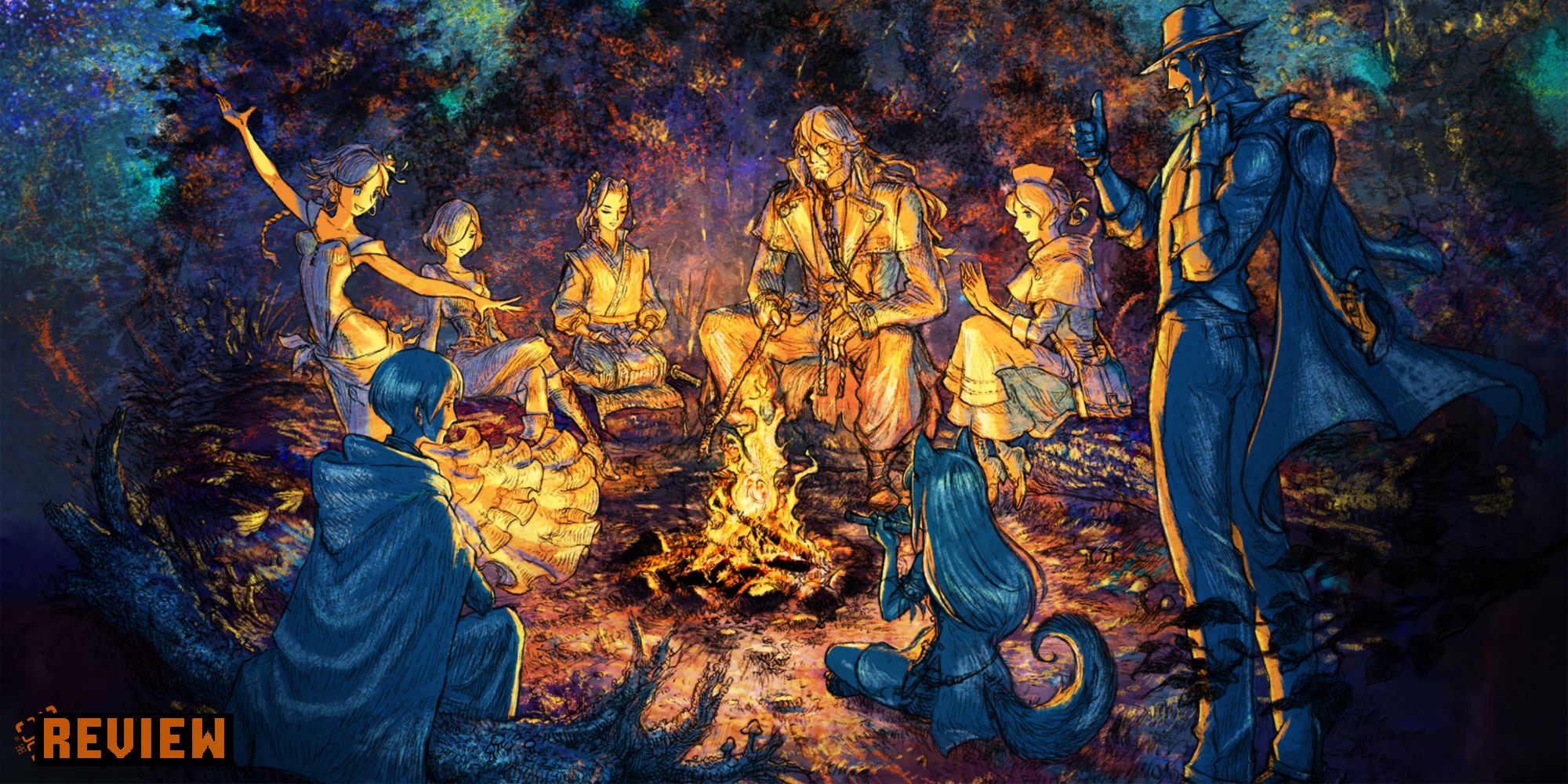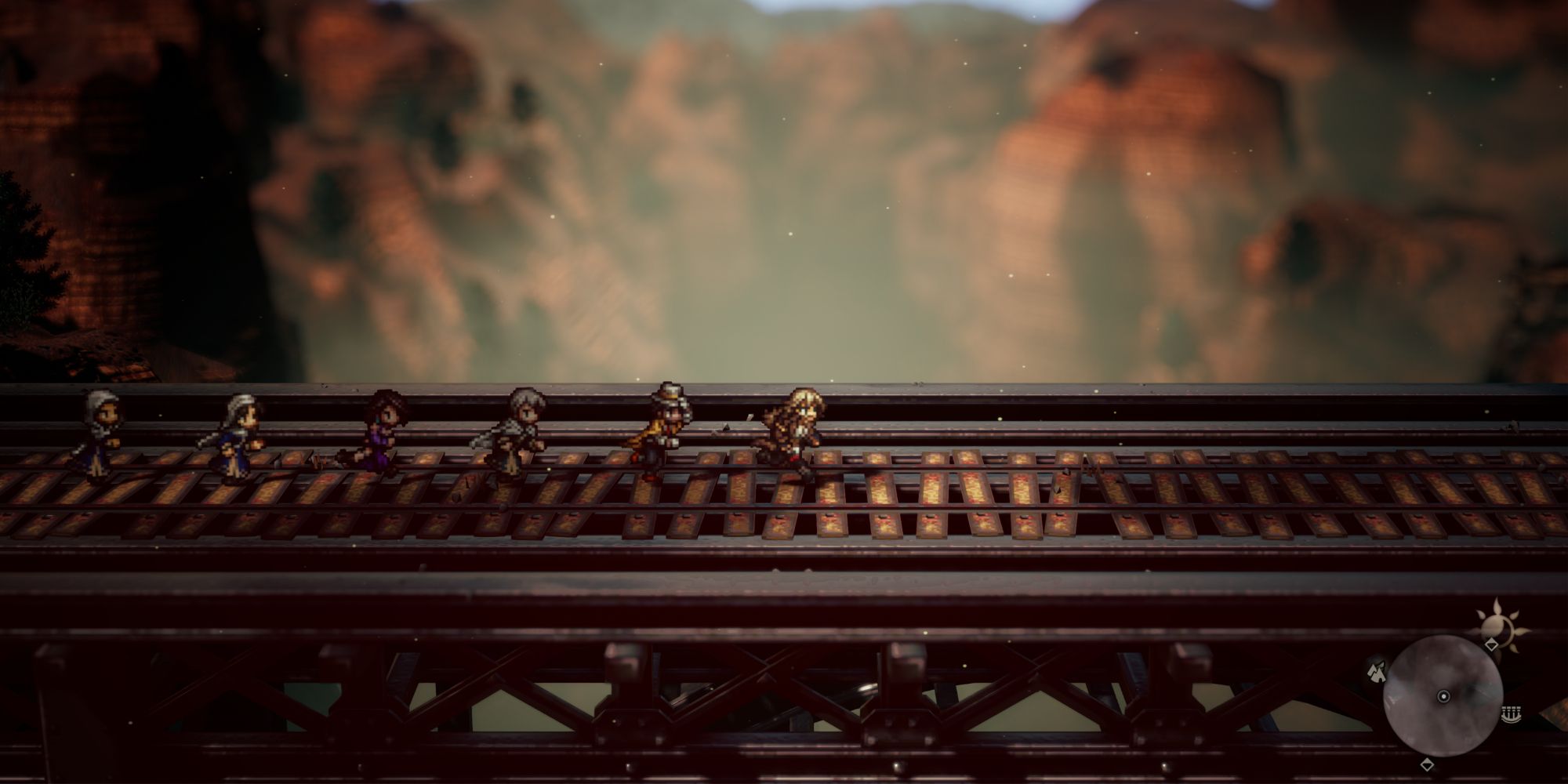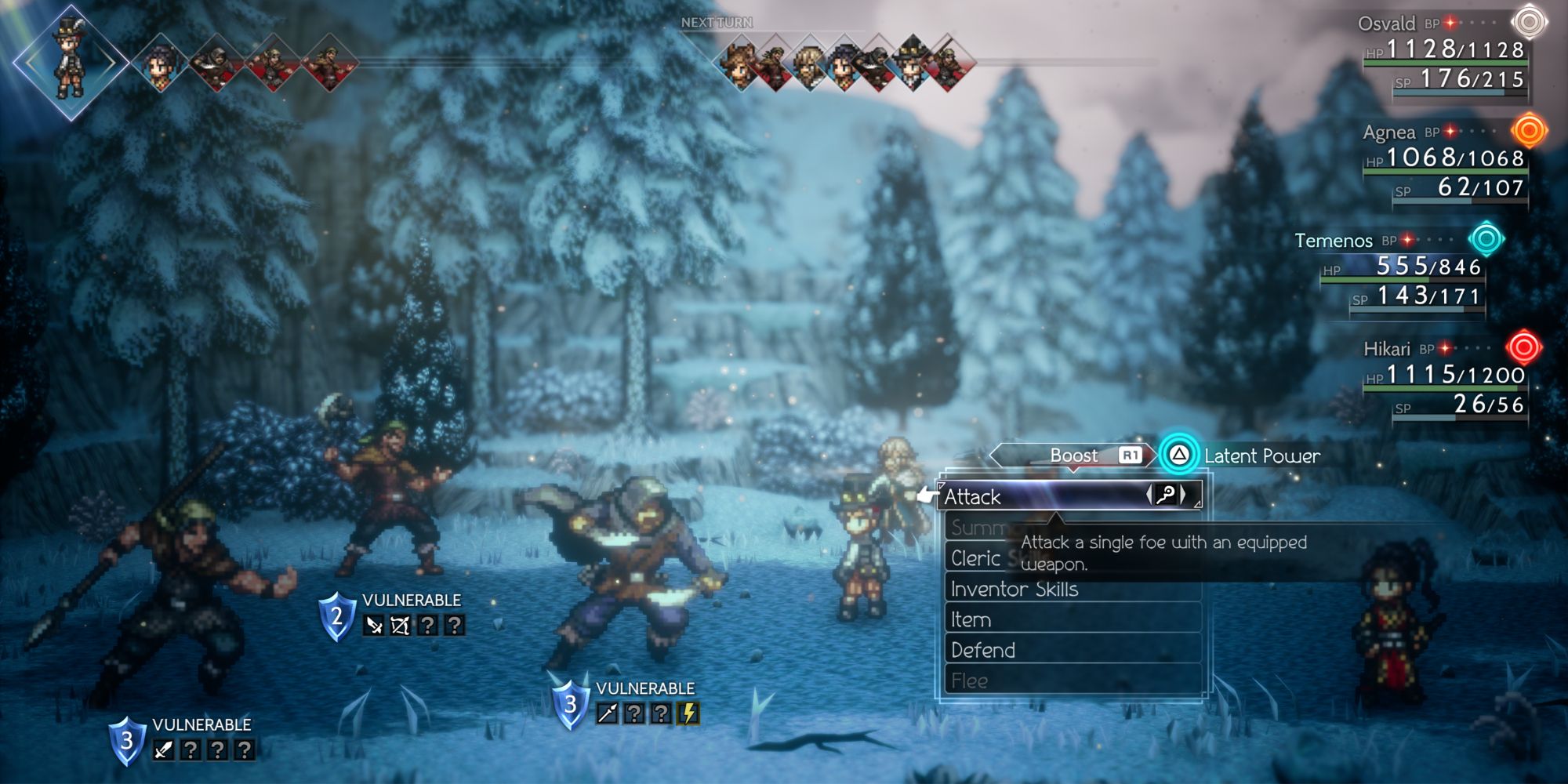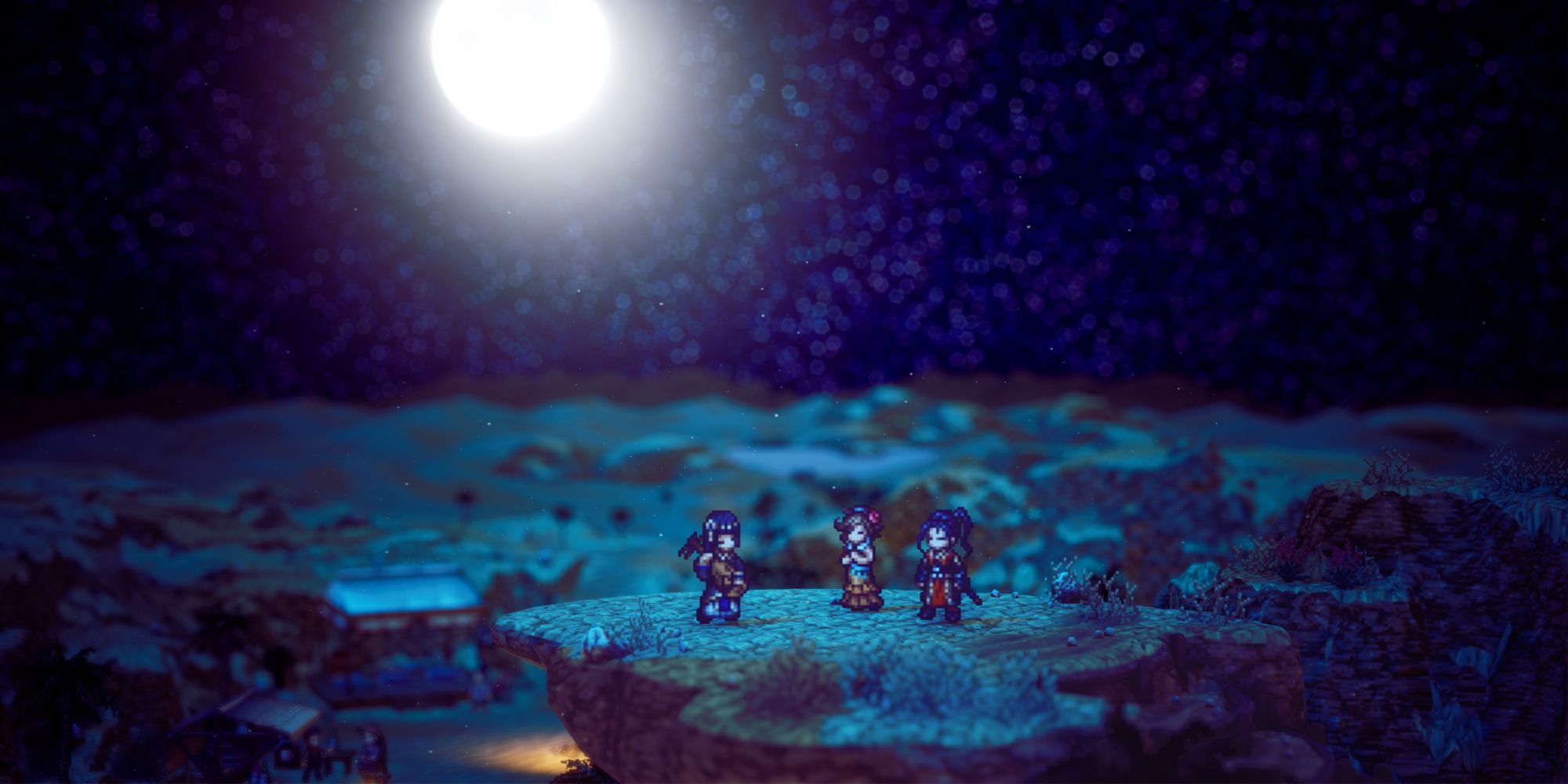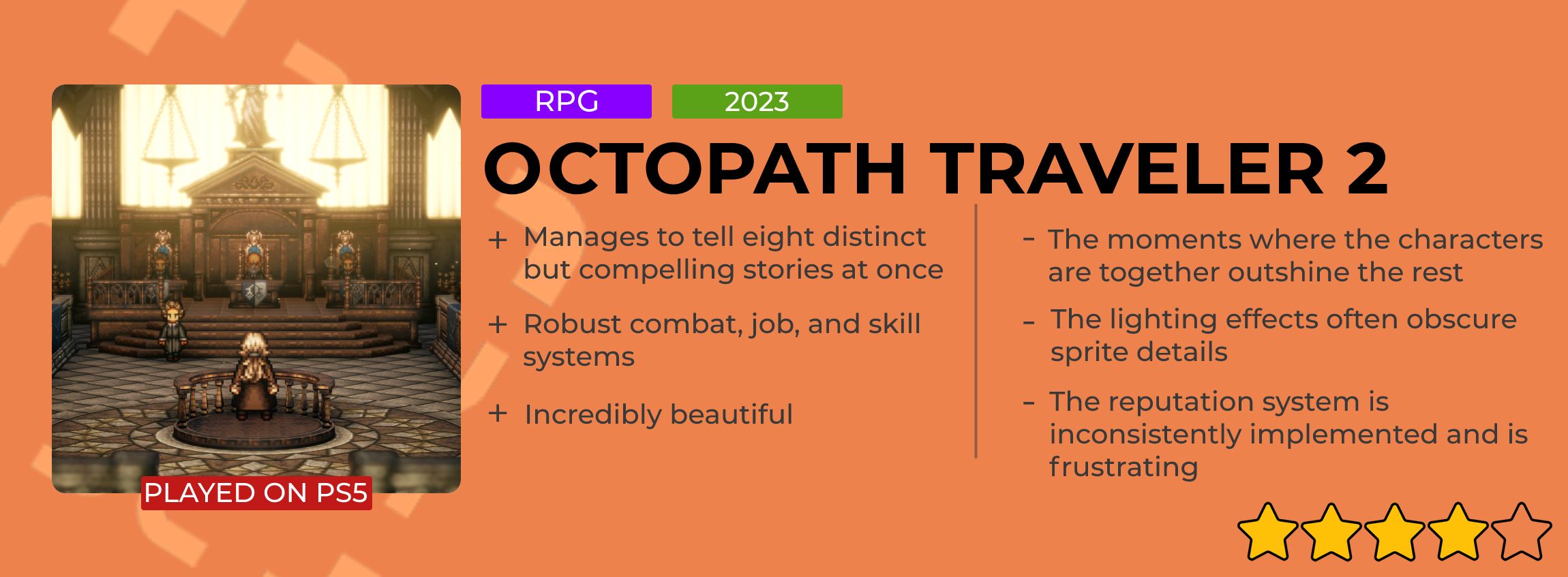Imagine being at a bar with eight people who all want to tell you a story, all of which are quite different. One tells a story about a plucky dancer who wants to make it big, another is about a prince from a desert kingdom working to dethrone his evil brother, and one is basically a crime scene detective but also a standard fantasy cleric. These are eight distinct stories that would all suit being the main thrust of a JRPG. The storytellers refuse to take turns - instead, you catch bits of each story at random, the experience is replete with mood whiplash, and the protagonists of each story sometimes meet up to have their own smaller sub-stories that you have to keep track of. This is what playing Octopath Traveler 2 feels like.
Compared to the previous game, Octopath Traveler 2 is surprisingly competent at handling its disparate narratives. It’s clear that the devs took the complaints about the cast and stories of the first game feeling far too isolated and worked to stitch them together with fewer seams. Each story tackles different genres and moods, but shared qualities and themes tie them together with a single exciting climax.
The inclusion of extra chapters that have pairs of characters interacting together in the ways you’d normally expect of a JRPG cast adds some charm and believability to the characters’ situations, too. However, the game still doesn’t go far enough. While well-written, the individual characters' chapters are still largely standalone, with only small Tales-esque banter sequences displaying any intra-party interactions. When you get to the paired chapters and the final sequence, all eight characters finally interact at last, and it feels like the rest of the game is full of missed opportunities. In a 60+ hour game, that’s a lot to miss out on. These characters have compelling personalities that shine brightest when they can bounce off each other, and it’s because they work so well as scene partners that the rest of the game, where they are solo heroes with their own supporting casts, feels disappointing in comparison.
The setting is very distinct from the previous game, too, having only a few things in common, such as the currency name and pantheon of gods. While still an ostensible fantasy world, it is undergoing a fledgling industrial revolution, which makes for a fascinating clash of ideas. The overarching narratives, especially within Partitio the merchant’s chapters, explore the applications and distribution of machines like the steam engine, the gramophone, the department store, and the telescope. Through this, Octopath Traveler 2 tackles capitalism amongst other heavy themes, including the abuses committed by correctional officers, environmentalism, and survivor’s guilt.
The more modern setting allows the game to discuss these topics without feeling too anachronistic and makes for more interesting stories told in a realistic world. While the narratives mostly don’t delve deep enough into these topics to make any bold statements, they are thought-provoking at the very least. The exception is with Partitio’s story, which provides a hamfisted but very fair strike at capitalism that borders on parody so much that it feels deliberate and comedic without taking away from the point.
The combat system is a natural evolution of the one used in the previous game. In addition to a very flexible job system that allows you to play mix-and-match with character skillsets, each traveller now has a Latent Ability and two EX Skills, which help to further individualise them. Working out how to take advantage of these Latent Abilities, especially when paired with secondary jobs, is one of the combat system’s highlights. Give Agnea the dancer a wider range of single-target buffing moves through, for example, the Cleric subclass, and you can end up sharing them with the entire party. It’s a very powerful system for the theory crafters out there. The game encourages thoughtful gameplay, lending itself to setting up totally broken combinations of skills and attacks - stat buffs are very powerful, equipment bonuses are varied and plentiful, and the boost system allows you to engineer discrete phases of feast and famine. Pouring multiple turns of setup into a single attack that has the potential to one-shot an endgame boss is one of the most delightful and satisfying experiences Octopath Traveler 2 has to offer, making experimenting with different party setups and subclasses all the more rewarding.
Picking up these subclasses and EX Skills requires some thorough exploration, so it’s good that the world is absolutely stunning. Every location is incredibly detailed, bursting with atmosphere. When you take your first steps in the city of New Delsta, you know that this is the metropolitan hub of the world. The line between affluence and poverty is drawn quite explicitly, but both halves of the city mesh together well, showing a deliberate throughline in design. This attention to detail is consistent throughout the game, with even inconsequential caves and deserted islands feeling distinct and unique. Add to this a very beautiful soundtrack with ear-worm pieces, and you have a pretty perfect presentation package. The game has multiple sequences in which characters sing or perform, which play out like the opera scene from Final Fantasy 6 - they never feel tedious, and this is largely due to the music, creating memorable and enjoyable moments.
The contrast between day and night is a central theme to the game. Nights are dangerous, both in legend and in day-to-day life. Random encounters at night are often harder than those you face during the day, and each character has two separate abilities they can use when interacting with NPCs, with the one used at night often being the more violent or illegal one. Osvald and Temenos, for example, can investigate people and guide them around during the day - at night; however, they turn into brutes, mugging people for items and beating them up for information. I mentioned in my preview that it feels very odd to have such blatant and explicitly violent actions available to the player with no repercussions whatsoever attached, not even with the game’s inbuilt reputation system, which would have been the perfect vehicle to punish those for taking the evil-aligned path.
When all is said and done, and the eight storytellers have finally found a way to make their narratives line up and come together to deliver the exciting finale, Octopath Traveler 2 makes for a satisfying night at the bar. It’s full of pathos and excitement that pushes you forward, and the gameplay is tight and enjoyable. You can’t help but wish it was a little more well-structured, but seeing how the storytellers learned so much from their previous attempt, it’s hard not to look forward to the tales they’ll tell next time.
Score: 4/5. A review code was provided by the publisher.
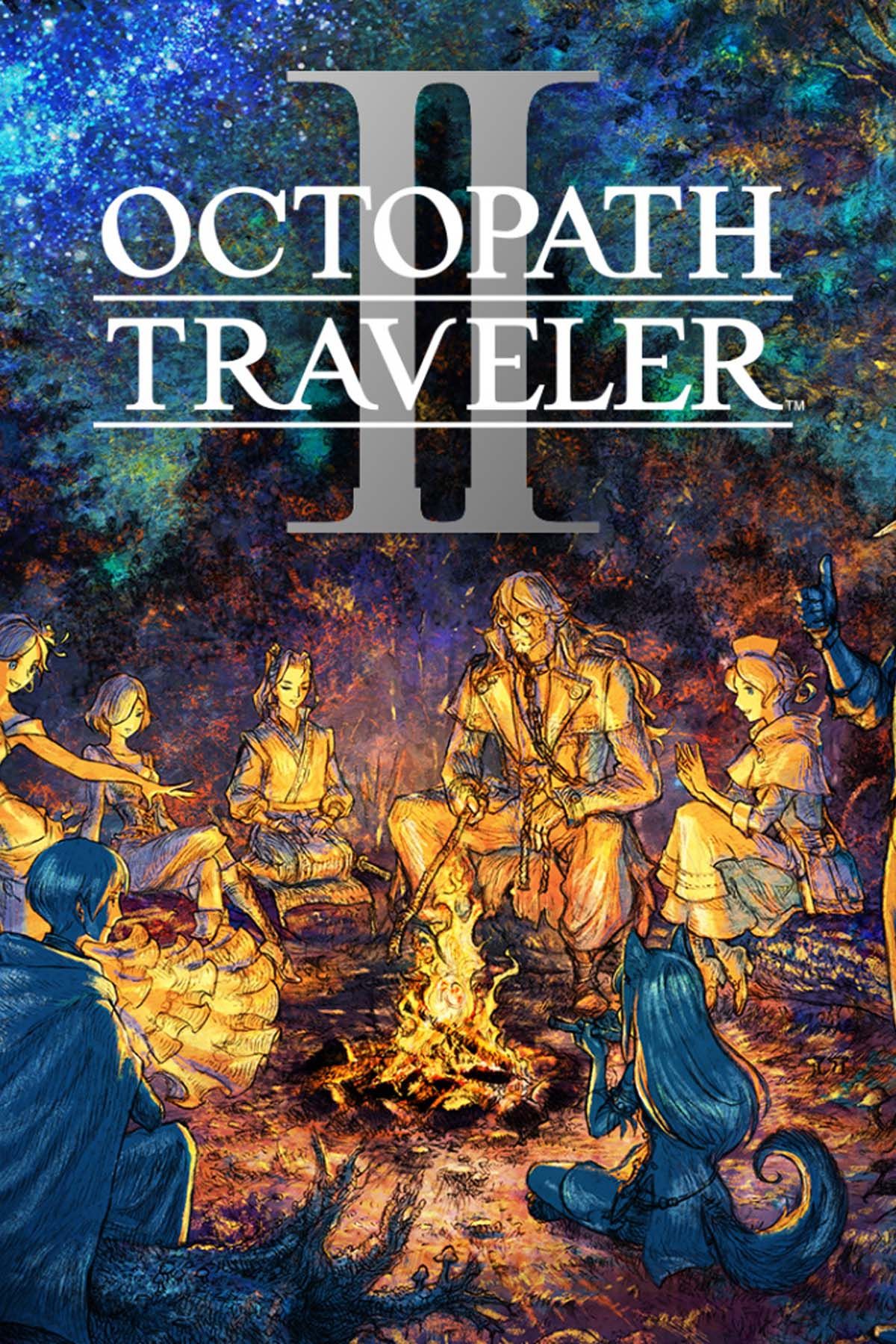
Octopath Traveler 2
Octopath Traveler 2 follows eight new characters on their personal journeys. Continuing in the HD-2D style, it retains the gameplay of its predecessor while adding day and night cycles, additional quest types, and a type of ability called a 'latent power'.

